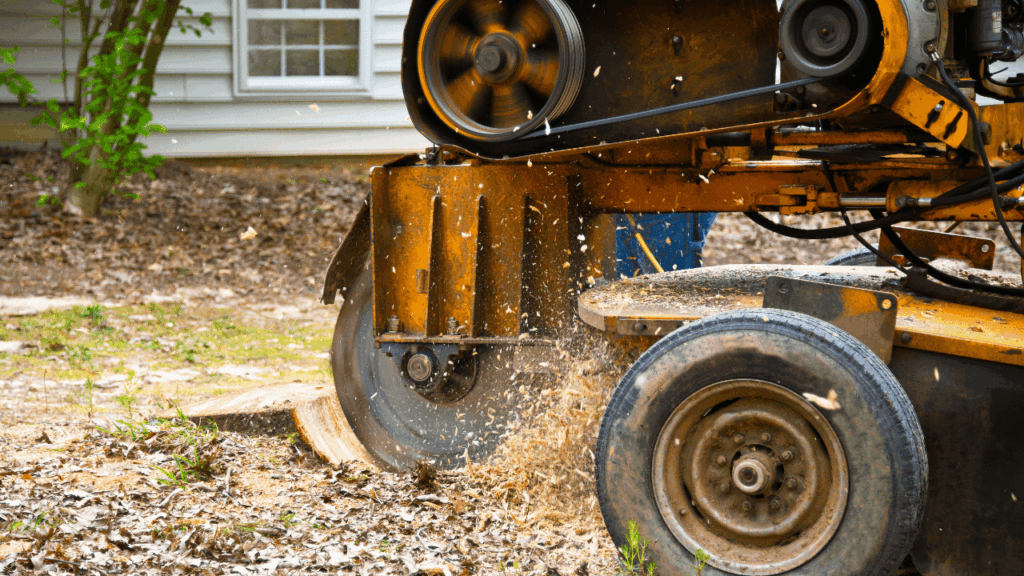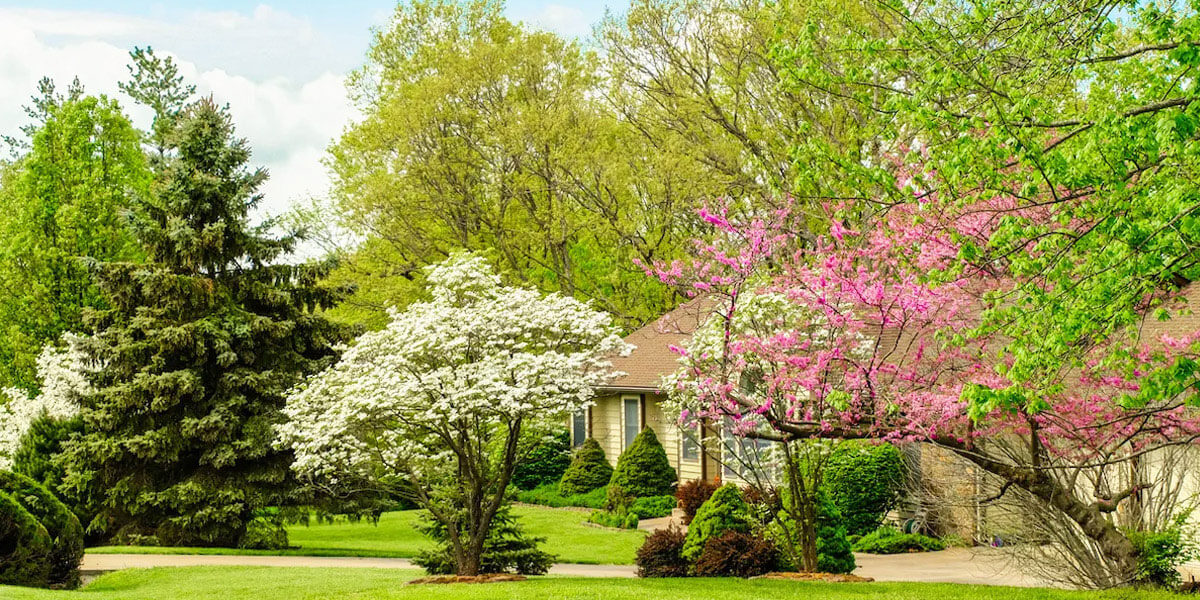After tree removal, that empty patch in your yard doesn’t have to stay bare. It’s actually a fresh start for new growth.
Whether you want shade, flowers, or ground cover, the right plants can restore beauty and balance to your landscape. Here’s how to choose wisely.
What to plant after tree removal?
Backfill the hole with quality topsoil, then choose plants that match your goals—grass, shrubs, flowers, trees, or even edibles.
Key Takeaway
- Have Timber Brute grind the stump and remove leftover roots or debris.
- Backfill the hole with high-quality topsoil or compost.
- Match plants to soil, light, growing zone (Richmond Virginia is in zone 7B) and your goals (shade, privacy, food, or curb appeal).
- Grass offers a clean look, shrubs give structure, flowers add colour, and fruit plants mix beauty with function.
- Avoid mistakes like leaving the stump, using poor fill dirt, or rushing planting. Make sure that your choice is compliant with your HOA and local authorities.
Assessing the Site Before Planting
Begin by removing roots and any leftover debris. Once cleared, assess the soil—if it’s compacted from heavy equipment, loosen it to help roots grow freely. While doing this, consider learning what to do with wood chips after tree removal to make the most of leftover materials.
Also, pay attention to sunlight after tree removal in Short Pump, VA. Once the tree’s gone, the light levels around your yard can change completely. Spend a day watching how the sun moves across the space to figure out which plants will thrive best.
How to Prepare the Soil After Tree Removal

- Clear out debris: Remove leftover roots, chips, and rocks so new plants have clean soil.
- Backfill with topsoil: Treat the hole like a fresh canvas. Use quality topsoil so roots can anchor properly.
- Level and compact lightly: Smooth the area, but don’t over-pack the soil.
- Enrich with compost: Mix in organic matter to boost nutrients and soil health.
Best Planting Options After Tree Removal
- Go With Grass: For a simple, low-maintenance option, grass creates a smooth, clean finish that hides the scar of removal. Choose a type that matches your climate.
- Shrubs With Style: Shrubs add structure and depth. Hydrangeas bring bold blooms, while boxwoods offer a neat, sculpted look. They establish quickly and provide year-round appeal.
- Flower Beds That Pop: Want colour and curb appeal? Perennials like daylilies and hostas—or seasonal tulips, transform the bare spot into a vibrant focal point. Compost helps flowers take root fast.
- Trees 2.0: If you miss shade, plant a new tree nearby. Avoid the exact old spot to prevent competition with lingering roots. Consider fast-growing maples or ornamental cherries. Pro-tip: skip Bradford Pears, they’re weak and prone to breaking.
- Edible Options: Blend beauty with function by planting blueberries, herb gardens, or dwarf fruit trees. Fresh produce plus curb appeal? That’s a win-win.
Choosing Plants Based on Goals
Clear the space first with fresh topsoil. Then think about your goals.
- For shade, go with quick-growing trees.
- For privacy, evergreens are your best bet.
- For colour, layer perennials with seasonal blooms.
- For food, choose fruit trees or raised garden beds.
The key is matching your choices to your lifestyle, whether that means adding low-maintenance landscaping or planning for future growth after tree removal in Manakin, VA. Your yard should work for you, not the other way around.
Common Mistakes to Avoid
- Leaving debris: Roots and chips interfere with new growth.
- Using poor fill dirt: Plants won’t thrive in low-quality soil.
- Rushing the planting: Give the soil time to settle for best results.
Tips for Long-Term Success
Select plant species that match your yard’s sunlight and soil conditions rather than choosing solely based on appearance. As you plan your landscape, it can also help to understand related upkeep, such as how to estimate tree removal?—so you’re prepared for long-term care. Water new plants consistently at first, then gradually reduce watering to promote strong root development.
Use mulch to lock in moisture and keep weeds under control. After completing tree removal in Rockville, VA, this simple step helps your new plants thrive by maintaining soil health and stability.
Frequently Asked Questions
1. Do I need to clear the area before planting?
Yes. Clear leftover roots and debris, then fill with fresh topsoil.
2. What grows best after tree removal?
Grasses, shrubs, flowers, or even a new tree planted a few feet away from the old spot.
3. How soon can I plant?
As soon as the ground is backfilled and level with nutrient-rich soil.
Conclusion
From there, it’s your call, fruit trees, shrubs, or even a fresh lawn can all thrive in that spot.
Think of it like swapping out worn sneakers for a crisp new pair. Same ground, but a whole new vibe waiting to grow.

